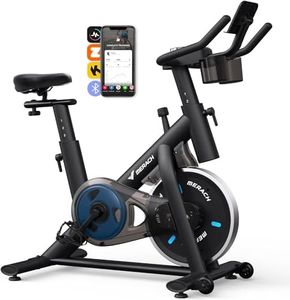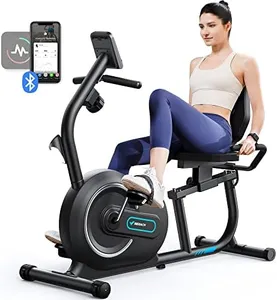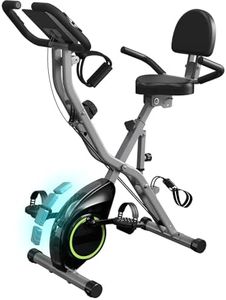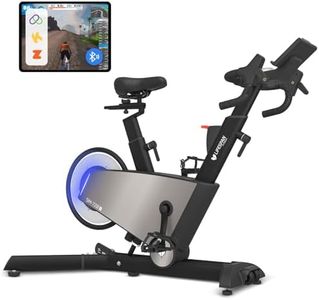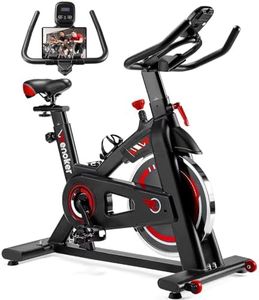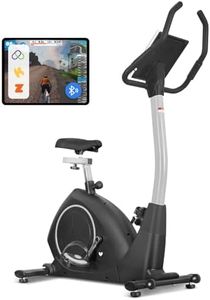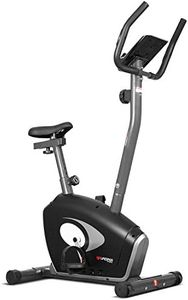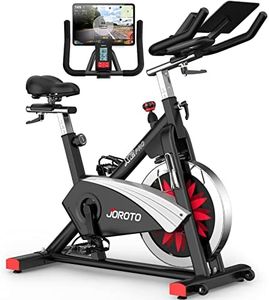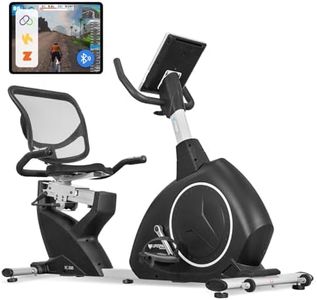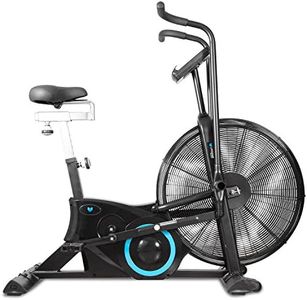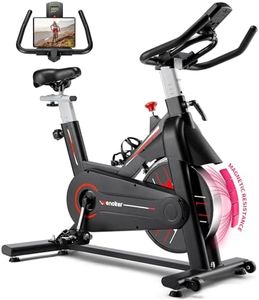We Use CookiesWe use cookies to enhance the security, performance,
functionality and for analytical and promotional activities. By continuing to browse this site you
are agreeing to our privacy policy
10 Best Budget Exercise Bikes
From leading brands and best sellers available on the web.Buying Guide for the Best Budget Exercise Bikes
Choosing a budget exercise bike is a great way to stay active at home without spending a fortune. To make the best choice, it's important to focus on the features that truly impact your comfort and the quality of your workouts, rather than getting distracted by marketing jargon. Understanding what each key specification means and how it relates to your fitness goals or lifestyle will help you pick a bike that keeps you motivated and fits your needs.Resistance TypeResistance type determines how easy or hard it is to pedal and how smooth your workout feels. Common types include magnetic, friction, and air resistance. Magnetic resistance is typically quieter and lasts longer because there are fewer parts rubbing together, but is sometimes pricier. Friction resistance is common in budget bikes and provides a wide range of intensity, but the pads may wear out over time. Air resistance becomes harder as you pedal faster, offering a natural-feeling workout but tends to be noisier. For quiet, long-lasting use, magnetic is best if available; if you prioritize simplicity or intensity range, friction is a solid choice.
Weight CapacityWeight capacity tells you how much weight the bike can safely support. Bikes with lower capacities are often lighter and less sturdy, while higher capacities mean more solid construction. Standard ranges go from about 220 to 300 pounds. When deciding, choose a bike that supports more than your current weight to ensure stability and safety, while also allowing for comfortable use over time.
AdjustabilityAdjustability refers to how well the seat and handlebars can adapt to your height and body shape. Many budget exercise bikes allow for up-and-down seat adjustments, while pricier ones also let you move seats forward and back and adjust handlebars. Good adjustability ensures you can ride comfortably and avoid strain or injury. To pick right, look for a bike that lets you set the seat so your legs extend comfortably; this is especially important if you’re shorter or taller than average.
Display Console FeaturesThe display console shows your workout details, such as speed, distance, time, and calories burned. Basic bikes may only track a few metrics, while others offer heart rate monitoring or built-in workout programs. Decide what information keeps you motivated—basic progress tracking may be enough, or you might want more feedback to help plan your sessions. If tracking performance is important to you, pick a bike with displays that align with your fitness goals.
Bike Type (Upright vs. Recumbent)Bike type refers to the riding position. Upright bikes feel more like regular bicycles and work your core and legs intensively, while recumbent bikes have a chair-like seat, offering more back support and comfort, which is great for longer or gentler sessions. Choose upright if you want a traditional bike feel and a more challenging workout; pick recumbent if you have back issues or prefer a relaxed seating position.
Size and PortabilityThe size of the bike and how easily you can move it are important if you have limited space or plan to store the bike when not in use. Some bikes have wheels for easy moving and a folding design to tuck away. If you need to save space or expect to reposition your bike regularly, look for lighter or foldable models with transport wheels.
